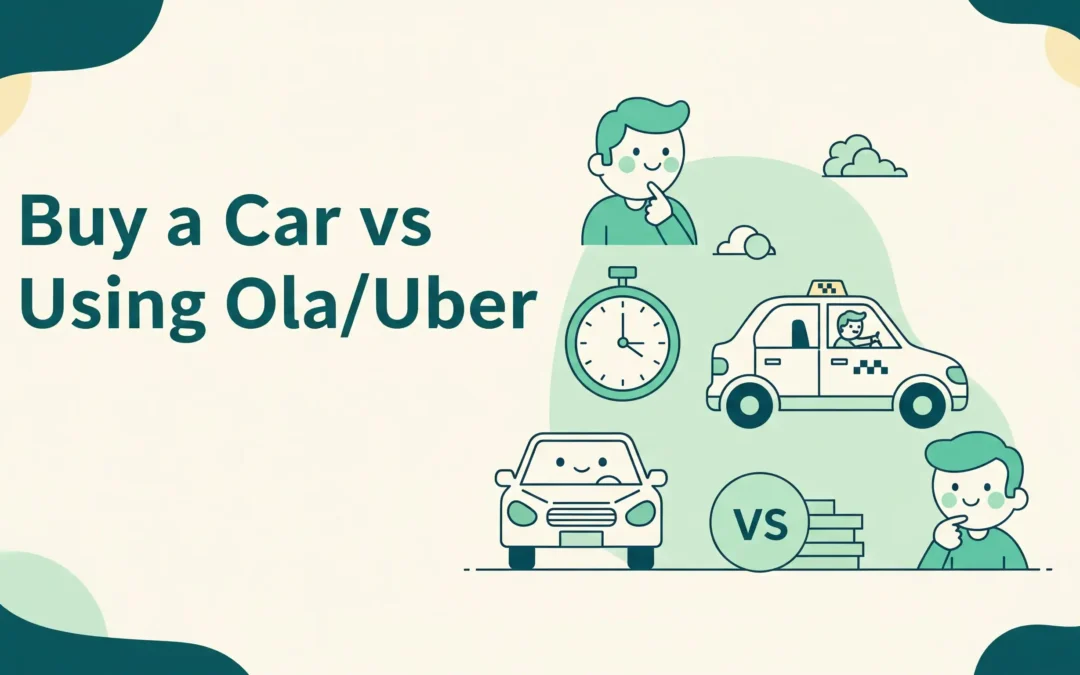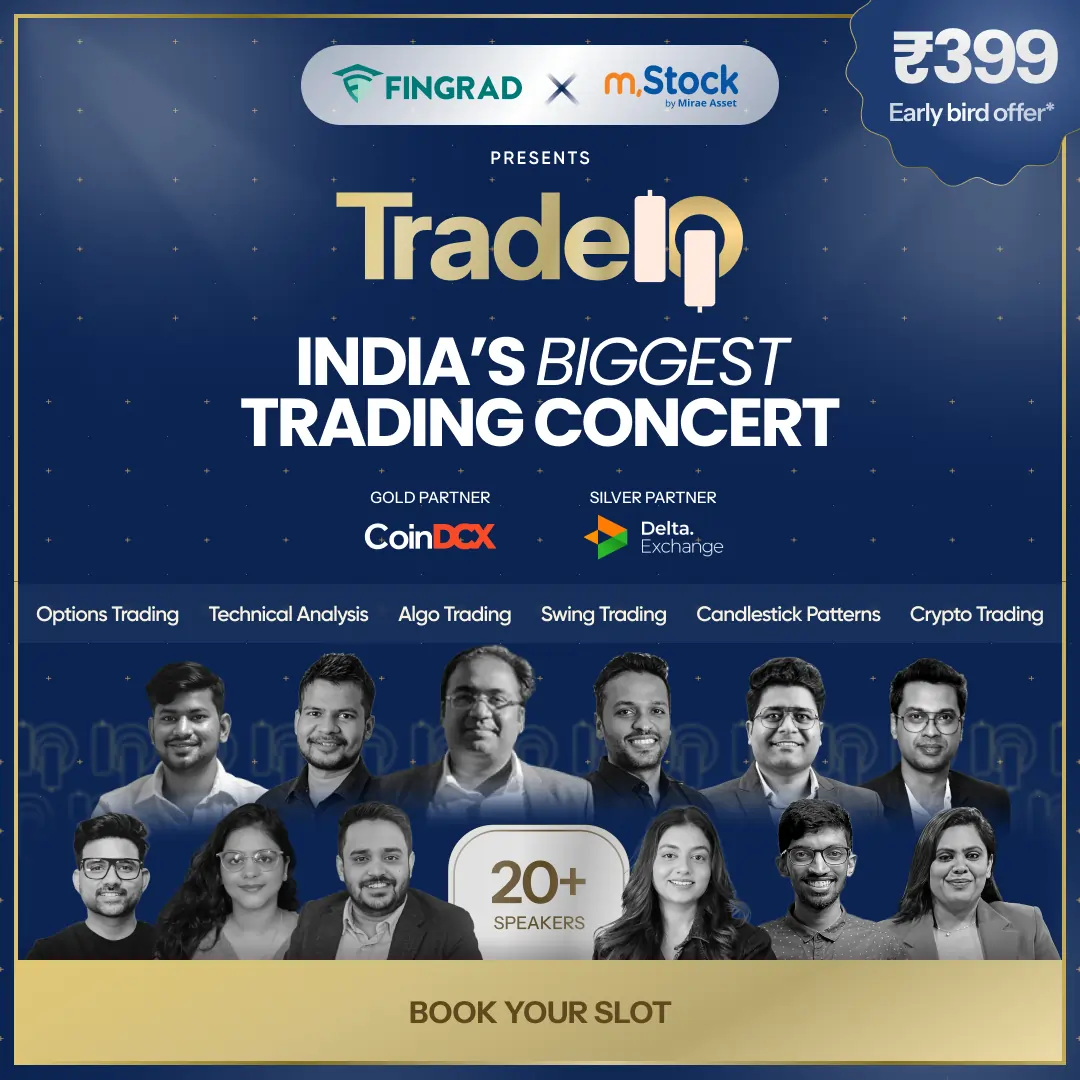Buying a car in this economy is a big hit to the budget of a common individual. People often spend a good time researching and taking opinions from their family and friends before buying a car. However, many individuals prefer Ola/Uber services for commuting. This can be due to various reasons, like avoiding a huge expense, fewer traveling needs, etc.
This article gives a detailed cost breakdown of owning a car and using a cab service. This will help you analyse and decide which one is the right option for you.
Cost Breakdown: Buying a Car
Purchasing a car is frequently thought of as a long-term investment, but the true cost of ownership is much higher than the purchase price. To determine the true financial commitment, it is important to consider all related costs.
1. EMI and the down payment
- Car loans are used by the majority of people to buy cars.
- Suppose the down payment required is Rs. 1,00,000, so your monthly EMI would be approximately Rs. 10,000.
- EMI cost per year: Rs. 10,000 x 12 = Rs. 1,20,000
2. Fuel Costs
- Fuel cost is an unavoidable part of the expense of owning a car.
- For this estimate, we’ll assume a moderate use case of 12,000 km annually. With current petrol prices of around Rs. 100/litre and average car mileage of 12–15 km/litre, the fuel cost is about Rs. 6–8 per km
- Fuel expenses per year: Rs. 72,000–96,000
3. Insurance
- It is essential to have a comprehensive insurance policy that covers personal accident, own damage, and third-party coverage.
- Depending on the age, type, and location of the vehicle, insurance premiums can range from Rs. 10,000 to Rs. 20,000 annually.
- You should budget about Rs. 15,000 a year.
4. Maintenance and Repair
- Regular maintenance is necessary for cars, including tyre rotations, brake pad inspections, oil changes, and filter replacements.
- Depending on usage and car type, yearly maintenance for a new car can range from Rs. 3,000 (entry-level) to Rs. 12,000 (mid-range). For a typical mid-range car, budgeting Rs. 10,000 annually is reasonable.
- We make the conservative assumption that planned maintenance will cost Rs. 10,000 annually.
6. Depreciation
- The value of a new car typically drops by 15–20% in the first year and 10–15% each subsequent year. For a car costing Rs. 6,00,000, this means an average annual depreciation of Rs. 60,000–90,000, which should be considered as part of the total cost of ownership.
5. Tolls, parking, and other fees
- Paid parking at malls and workplaces, or monthly parking in urban apartments, adds up.
- Accessories like seat covers, GPS, etc., and tolls during highway commutes should all be taken into account.
- Aim for about Rs. 500 a month.
- The total cost per year is Rs. 6,000.
Summary table:
| Component | Estimated Annual Cost |
| EMI (Loan Repayment) | Rs. 1,20,000 |
| Fuel | Rs. 72,000 – 96,000 |
| Insurance | Rs. 15,000 |
| Maintenance & Servicing | Rs. 3,000–12,000 (depending on car type) |
| Parking, Tolls, etc. | Rs. 6,000 |
| Total Estimated Cost | Rs. 2,21,000–2,53,000 per year |
Cost Breakdown: Using Ola/Uber
Many urban commuters now use apps like Ola and Uber as their primary mode of transportation. However, initial expense is not required, but how do the expenses mount up over time? Let’s see:
1. Base Fare and Distance Fees
- Base fare: A set initial cost that typically varies with distance.
- The cost per kilometre varies based on the city you are living in.
- A time charge is applied if traffic causes the ride to take longer.
- The cost varies depending on the type of ride: Ola Mini, Uber Go, Ola Prime, or Uber Premier.
Assuming that you cover about 700 km a month, with base fare and time charges included, the average ride costs Rs. 11 per km.
- Cost per month: Rs. 7,700
- Cost per year: Rs. 7,700 × 12 = Rs. 92,400
2. Peak-Time Fees and Surge Pricing
- Fares frequently increase, sometimes by 1.5x to 2.5x, during times of high demand, such as rainy days, weekends, holidays, or peak traffic hours.
- Surge pricing may account for 15 – 20% of your total ride cost if you regularly travel during these periods.
- Assume a monthly surge of Rs. 1,200 on a monthly average, Rs. 1,200 × 12 = Rs. 14,400 is the annual surge pricing.
3. Charges for Waiting Time
- If you wait for a friend or are stuck in traffic, then after a few free minutes, Ola and Uber charge for waiting time.
- Suppose an additional Rs. 50 per month can result from average ride delays due to various reasons.
- Then charge per Year: Rs. 600
4. Tips and Extra Fees
Tipping drivers has increased on digital platforms, even though it is optional. In addition to that, some other fees that are charged are:
- Platform charges
- Cancellation fees
The estimated yearly additional fees range from Rs. 1,000 to Rs. 1,500, though they can vary greatly.
Summary table:
| Component | Estimated Annual Cost |
| Base Fare | Rs. 92,400 |
| Surge Pricing | Rs. 14,400 |
| Waiting Charges | Rs. 600 |
| Tipping & Misc. Charges | Rs. 1,000 |
| Total Estimated Cost | Rs. 1,08,000 per year |
Which Option Is More Suitable for You?
Now that we have understood the expense for both modes, let us see the suitability for both of them:
1. Purchase a car If You:
- Travel long distances every day.
- Reside in places with inadequate public transportation or little access to taxis.
- Prefer flexible or impromptu travel, such as weekend road trips at the last minute.
- Have a family that requires frequent transportation (elderly, children, etc.).
- Prioritize privacy.
2. Use Uber or Ola If You:
- Travel less than 1,000 km a month or commute occasionally.
- Live in a city where taxis are easily accessible.
- Reduce the frequency of your trips by working in remote or hybrid roles.
- Wish to stay away from expensive up-front expenses, EMIs, and maintenance concerns.
- Avoid the stress of parking, traffic, and servicing.
Bottomline
The conclusion can be drawn that the decision to own a car or use a cab service depends on the needs of the individual. The cost of purchasing a car is slightly higher when compared to using Ola/Uber. It requires maintenance, fuel charges, parking fees, etc. While cab service may charge additional fees for uncontrollable factors like traffic or even a slight delay.
So, individuals should focus on their needs and the availability of capital before making such decisions.


